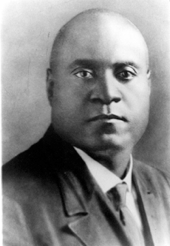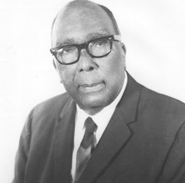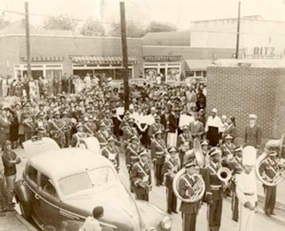The history of Farish Street Baptist Church is linked to the history and expansion of Christianity among African-Americans in Mississippi. Organized in 1893, Farish Street Baptist Church has been blessed by the vitality, imagination, and inspiration of its leadership.
The Reverend Elbert B. Topp served as pastor of Mt. Helm Baptist Church from 1888-1893, when, according to Patrick Thompson in his book
History of Negro Baptists in Mississippi, “he (Topp) with 210 me
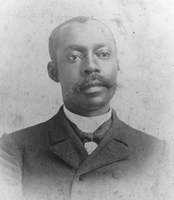
mbers came out and organized what is now known as the Farish Street Baptist Church.” The newly formed church held worship services in the Congregational Church, which was then located at the corner of Capitol and Lamar Streets. White Jacksonians would line the bridge to hear the choir sing, giving generously to the collections. Soon the infant congregation had enough money to purchase the lot at the corner of Farish and Church Streets. It was here that the newly organized congregation built the first place of worship - a frame structure. Lightning destroyed this building and it was replaced by a two-story frame structure. The second story was reserved for worship, with all other activities, including funerals, taking place on the first level. A fire, which began on Oakley Street and spread, destroyed the second building. Determined to minimize this threat in the future, in 1909, Reverend Topp led the membership in constructing a brick building. He pastored Farish Street Baptist Church until 1916.
Reverend Topp died on October 3, 1925. The October 9 edition of the Advance Dispatch carried a front page announcement of his death. Of Topp, Patrick Thompson wrote, “no member of the convention and state is more conspicuous and popular. Reverend Topp is good natured and full of life. True to his fellow preachers and has but few equals as a gospel minister.”
Reverend E. L. Twine, an Alcorn College graduate and teacher of mathematics, was called to serve the Church in 1916, and for three years, he labored faithfully. During that brief tenure, he encouraged the congregation to purchase new pews and to make a substantial payment on the church mortgage, which had been left from previous years. His pastorate was to be the shortest during the Church’s first 100 years of existence. Because of his stately nature, Reverend Twine would be known by his contemporaries as the “Black Prince of Mississippi.”
In November 1919, the Church extended the call to Reverend Chester Arthur Greer. Reverend Greer had pastored and taught school in Arkansas and Mississippi, and at the time he was called to Farish Street Baptist Church, he was serving as pastor of Second Baptist Church in Oxford, Mississippi. He served as pastor of Farish Street Baptist Church until November 1927. During those ei
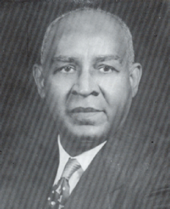
ght years, the mortgage was paid in full; the bell tower was completed; an annex was built onto the 1909 structure; a parsonage was bought; an old note of $500.00 on Dr. Topp’s salary, held by Brother C. C. Sims against the Church was redeemed; 40,000 bricks were bought and placed on the church grounds to be used in the construction of a new church facility; plans and specifications with an architect’s rendering had been presented in the church conference on March 4, 1926, and had been approved without one dissenting vote; several hundred dollars were raised and negotiations for a loan of $20,000 were initiated. However, in November 1927, just a little more than a year after Dr. Greer had presented those plans to the church, he resigned and moved to Fort Worth, Texas, to accept the pastorate of Mt. Gilead Baptist Church.
Reverend W. L. Varnado assumed the pastorate of Farish Street Baptist Church in April 1928. Perhaps Reverend Varnado will be remembered best as the only p
erson to pastor Jackson’s three historic black congregations - - Mt. Helm, College Hill and Farish Street Baptist Churches. During his term of service, the membership increased and two rooms were added to the parsonage. Reverend Varnado was a great churchman. It was during his pastorate that a young Jackson State College student from the Class of 1927 was ordained to the gospel ministry. His name was Joseph Harrison Jackson. Who would have envisioned in 1927 that Reverend Varnado was ordaining to the work of the gospel ministry the future leader of six million black Baptists? Dr. Varnado resigned in October 1934 to accept a pastorate in Jackson, Tennessee.
Without fanfare, the man who had served diligently as the third pastor returned in January 1935, to begin his second pastorate. Reverend Chester A. Greer began a building program, which resulted in the replacement of the forty
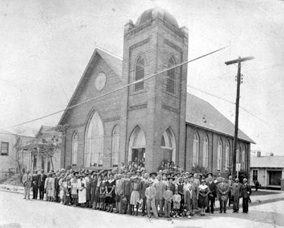
year old structure with a modern building, which still serves the congregation today. The ground-breaking ceremony was a joyous occasion. Mrs. Lillie Bentley and Mr. Turner M. Patterson, two of the original 210 members to leave Mt. Helm Baptist Church in 1893, participated in breaking ground for the new facility. Dr. Jacob L. Reddix, President of Jackson State College, Chairman of the Trustee Board of Farish Street Baptist Church, gave invaluable advice during the construction phase. At the laying of the corner stone, Jackson State College Band performed to the delight of the congregation. Dedication services for the newly constructed church building were held during the week of March 5-12, 1950. A renewed people joined hands with their sisters and brothers to praise Him Who is the great Builder and without Whom they that build, build in vain.
After serving for twenty-three years during his second pastorate, Reverend Greer was successful in retiring the debt and burning the mortgage before his victorious and faithful members. With his health on the decline, Reverend Greer decided to retire from the pulpit in March 1958. Reverend Greer was named “Pastor Emeritus” of the Church. Three decades of service to a great people had come to an end. The assistant pastor, Reverend G. W. Williams, supplied the pulpit until a successor was elected. Reverend Greer died on August 13, 1962.
During the summer of 1958, a young seminary teacher, Reverend S. Leon Whitney, came to Jackson to teach at the Mississippi Baptist Seminary. He was invited to preach to the congregation at Farish Street Baptist Church. Impressed with his preaching, on September 4, 1958, the congregation instructed the Pulpit Committee, chaired by Brother M. M. Hubert, to interview Reverend Whitney. On September 22, 1958, the Pulpit Committee made its recommendation to the Church. A meeting to vote on extending a call was set for the third Sunday in October. However, Brother D. T. Mason offered a motion that the rules be suspended and that Reverend Whitney be elected pastor that night. The motion carried and the church extended the call to pastor to Reverend Whitney. Thus began a term of service that lasted ten years.
Unlike his predecessors, Reverend Whitney did not inherit the financial
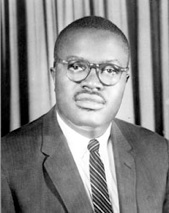
debts of former years. He found a congregation ready for new leadership. Reverend Whitney served wisely and made many improvements in the order of service. Moreover, he rejuvenated the spirit of the Church and increased the membership. He encouraged the establishment of a centralized treasury. The baptistry was elevated, and the building was renovated and redecorated. This youthful, energetic preacher accepted the challenge and embarked upon an aggressive ministry of evangelism, stewardship and social concerns. It was these social concerns--the freedom rides, the sit-ins, the protest marches and the mass meetings--that helped shape the ministry of this congregation during the turbulent sixties. Yet, despite ten years of fruitful, positive and constructive leadership in the church and community, Reverend Whitney resigned the pastorate of Farish Street Baptist Church in May 1968, to accept the pastorate of New Prospect Baptist Church in Detroit, Michigan.
In June 1968, Reverend Hickman M. Johnson, Chaplain of Tougaloo College, was invited to serve as interim minister. On July 22, 1968, the church voted to call Reverend Johnson and on August 4, 1968, he preached his first sermon as pastor. On December 1, 1968, Reverend Johnson was installed as the sixth pastor of Farish Street Baptist Church.
Reverend Johnson brought to the Church a strong capacity for effective organization. He recommended that the Church become incorporated and on November 13, 1969, a Charter of Incorporation was issued to Farish Street Baptist Church by the State of Mississippi. He labored for a continuous and consistent building program and established the necessary framework for the most diversified religious education and service-oriented programs in the Church’s history. A 1969 church brochure described the proposed building addition as being “of contemporary design, functional, attractive and air-conditioned, with ample parking . . . the first floor includes: administrative complex - church office, pastor’s study; fellowship-assembly hall, game room, dining room, kitchen; the second floor includes: education-nursery, ten large multi-purpose classrooms.” While improvements were to be made on the 1969 model, nevertheless, the functions on which this model were based remain unchanged: a) education, b) fellowship, and c) administration.
At the 1976 Annual Meeting, the Building Committee recommended that the Church authorize its officers to secure a commitment for permanent financing in the amount of $225,000. On February 10, 1976, a contract was signed with Charles Craig, project architect, to design and provide a set of working drawings. Invitations to Bid were tendered and proposals received from various contractors were tabulated and ground-breaking ceremonies for the new building were timed to coincide with the celebration of the Church’s 83rd Anniversary. One year later, in May 1977, the Educational Building was dedicated. This would be the first of several major improvements to the physical property completed during the Johnson's years.
Dr. Johnson is an administrator with great spirit; an historian who is cognizant of the importance of a people’s heritage; a businessman with a vision. He is a theologian and a teacher, who strives daily to build an even stronger congregation at Farish Street Baptist Church - a congregation committed to serve this community.


